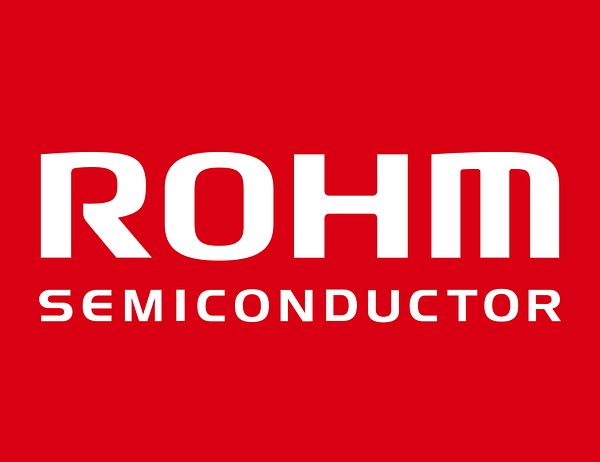Press release -
The Industry's First* 14-Cell Lithium-Ion Battery Monitoring LSI Compatible with High-Voltage NMOS Charge/Discharge Control -Contributes to improved reliability and greater miniaturization in li-ion battery monitoring systems-
* Sept. 2014 LAPIS Semiconductor study
LAPIS Semiconductor, a ROHM Group Company, has recently announced the development of the first lithium-ion battery monitoring LSI compatible with high-voltage NMOSFET*1 control that supports up to 14 cells in series, making it ideal for li-ion battery monitoring in electric bicycles and power storage systems.
The ML5236 monitors the voltage, current, temperature, and charger/load connection in lithium-ion battery monitoring systems and enables charge/discharge control using an NMOSFET on the high-voltage side. In addition, secondary protection functions*2 such as battery monitoring and protection functions that are typically performed using multiple LSIs are integrated into a single package, improving system reliability, simplifying configuration, and contributing to greater compactness.
A comprehensive support system is provided, including an evaluation board and software that facilitates evaluation, along with manuals and software than can be accessed and downloaded online (registration required).
High-density lithium-ion batteries are expected to see wide adoption in products such as electric bicycles and power storage devices. Implementing charge/discharge control at the high-voltage side is recommended to improve reliability during battery monitoring by preventing communication disruptions and ground wiring disconnections. Transitioning to higher voltage systems also provides greater capacity and contributes to a common platform.
In response, LAPIS Semiconductor has successfully developed a battery monitoring LSI ideal for cutting-edge high-voltage lithium-ion battery monitoring systems by utilizing market-proven mixed signal circuitry and proprietary high-voltage processes, and going forward will continue to meet the demand for high-voltage serial multi-cell battery monitoring LSIs in the industrial equipment and other markets.
Terminology
*1 :NMOSFET and PMOSFET
MOSFETs are transistors that act as a switch to control current flow via externally applied voltage.
Generally, NMOSFETs switch ON and PMOSFETs switch OFF when voltage is applied.
*2 : Secondary protection functions
These functions provide simple battery protection independent of the microcontroller, improving reliability.


* ① to ④ in the above diagram are associated with the following features ① to ④, respectively
Key Features
①Compatible with high-voltage-side NMOSFET charge/discharge control systems
High reliability can be achieved by utilizing an NMOSFET*1 at the high-voltage side for charge/discharge control. NMOSFETs also provide greater compatibility – in contrast to the more commonly used (and more expensive) PMOSFETs*1.
②Supports up to 14 cells in series
Support for lithium-ion battery monitoring sets of up to 14 cells in series is enabled. In addition, a class-leading breakdown voltage of 80V makes it possible to design higher voltage systems and achieve a common platform.
③All monitoring functions required for lithium-ion batteries on a single chip
The ML5236 includes all monitoring functions (voltage, current, temperature, charger/load connection) necessary for lithium-ion battery monitoring operation.
Measured values are digitized by the built-in A/D converter and output via SPI, enabling configuration of
simple battery monitoring circuits that are less susceptible to noise.
④Secondary protection functions built in (short current and overcharge protection)
In addition to li-ion battery monitoring, short-circuit and overcharge protection functions are included- independent of the microcontroller-improving system reliability.
Terminology
*1 :NMOSFET and PMOSFET
MOSFETs are transistors that act as a switch to control current flow via externally applied voltage.
Generally, NMOSFETs switch ON and PMOSFETs switch OFF when voltage is applied.
Applications
Electric bicycles, power storage systems, uninterruptible power supplies (UPS)
Sales Plan
Part No.
ML5236
Sample Shipment Period
Ongoing
Sample Price (tentative)
$7 (tax not included)
Expected Mass Production Shipment
From October 2014
Specifications
No. of Cells : Up to 14 in series
Built-In 12-bit Successive Approximation Type A/D Converter
Voltage Measurement Accuracy : ±10mV (typ.)
Charge/Discharge Current Measurement Accuracy : ±0.5A/Amplifier Gain x 12 (typ.)
Temperature Sensor Measurement Accuracy : ±25mV (typ.)
MCU Interface : SPI
High Voltage Side Charge/Discharge Control FET : NMOSFET (Direct Drive)
Built-in Cell Balancing Switch : Switch ON Resistance = 6Ω (typ.)
Secondary Protection Functions : Short Current Detection, Overcharge Detection
Current Consumption : 500uA (typ.) during Normal Operation , 0.1uA (typ.) during Power Down
Operating Power Supply Voltage : +8 to +64V
Operational Temperature : -40 to 85°C
Package : TQFP44 (12mm x 12mm)
Topics
- Business enterprise, General
Categories
- monitoring
- lib
- lithium-ion battery
